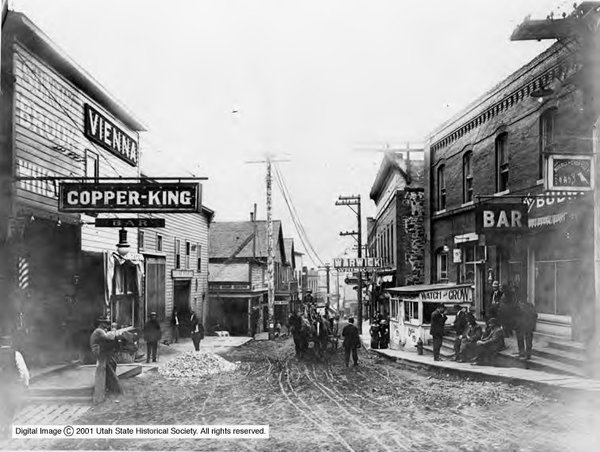Dublin Core
Title
Description
Located in Utah's Oquirrh Mountains, the Bingham Canyon Mine -- later known as Kennecott Copper Mine -- attracted thousands of workers and their families to the rural areas of Salt Lake Valley’s west side. The workers lived in company towns that flanked the mining operation. As the mine expanded to meet America’s burgeoning demand for copper, its growth threatened the very existence of its own company towns.
At the end of the nineteenth century, a copper boom reshaped the area around Bingham Canyon. The growing industry brought in miners from all over the world, who lived in the nearby communities of Lark and Bingham. By the 1920s, Bingham grew to 15,000 residents and mining executives constructed a new employee housing development in Copperton. These company towns included houses, stores, and other businesses that were largely owned by the mining company. Such communities meant that miners and their families could live near the mine, ensuring that they would arrive to work on time -- even when the weather was bad.
When the United States entered World War II, demand for copper soared. Used in ammunition and other manufacturing, copper was considered so valuable to the war effort that draft deferments were given to many Kennecott workers. Even still, the mine scrambled for workers, employing teenagers, women, and prisoners-of-war.
By 1944, copper production at the mine was first in the nation, providing nearly one-third of the copper used by the Allies during the war. But the insatiable appetite for copper threatened the very existence of company towns. In 1956, Kennecott sold all of the homes in Copperton to private owners. Bingham and Lark weren't as lucky. Kennecott Copper bought up private properties and homes, eventually dismantling these towns to make way for expanding the mine.
Today, Kennecott is the deepest open-pit mine in the world and supplies roughly 13% of the nation’s copper. The mine is also facing another boom: renewable energy. Fueled by the increasing popularity of solar power and electric vehicles, its copper is used in car batteries, electric motors, and electrical wiring. No longer located next to rural communities it can swallow, how will an expanding Kennecott Mine continue to reshape Salt Lake Valley?
Creator
Source
_______________
See Aaron Walton, “Bingham, Utah,” Western Mining History; “Kennecott Copper Mine in Utah,” Visit Utah, August 19, 2024; Stephen Dark, “Mining Memories,” Salt Lake City Weekly, June 29, 2016; Tim Fitzpatrick, “Rio Tinto Invests Nearly $1 Billion in Kennecott as EVs Fuel Demand for Copper,” Salt Lake Tribune, June 28, 2023; “Carma Wadley, “Mining Memories: ‘Millie the Miner’ and Her Fellows Kept Kennecott Thriving During WWII Years,” Deseret News, March 25, 2005; Scott Crump, Copperton, Publisher’s Press, 1978; Heidi Orchard, “Historic Copperton,” Beehive Archive, June 29, 2012; Desert Empire, directed by Carlton T. Stills, (Universal Pictures, 1948).

